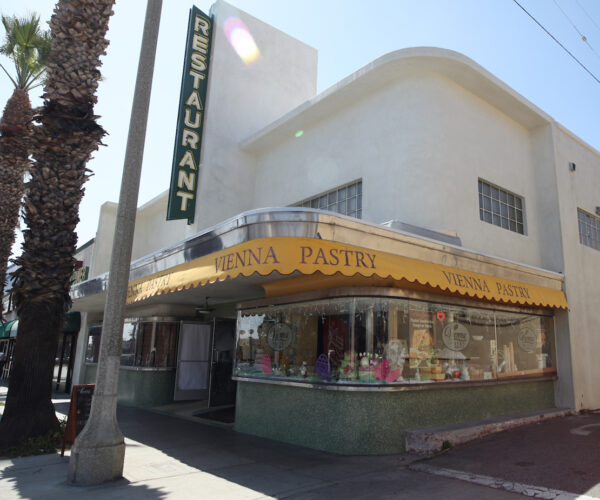
Place
Japanese Hospital
Established during an era of discriminatory medical practices, the Japanese Hospital opened its doors to a diverse clientele in the wake of a landmark case before the U.S. Supreme Court.
Resolved
The former Japanese Hospital in Boyle Heights is a protected Historic-Cultural Monument (HCM), however, the site’s future use remains uncertain.


Place Details
Address
Architect
Year
Style
Designation
Property Type
Government Officials
Community

L.A. Conservancy
Overview
Opened in 1929, the Japanese Hospital provided medical care for the Japanese American communities in Boyle Heights and Little Tokyo until 1962, when operations were moved to the larger City View Hospital in Lincoln Heights. It is closely connected to the community’s battle for civil rights during the early twentieth century.
The Moderne building is significant for its associations with Los Angeles’ early Japanese and Japanese American community, as well as the history of medicine and public health.
In 2016, the Little Tokyo Historical Society nominated the property for Historic-Cultural Monument designation. Japanese Hospital is now one of only a few local landmarks that recognize the contributions of Asian and Pacific Islander Americans to Los Angeles.
About This Place
About This Place
A pillar in its community for generations, the Japanese Hospital in Boyle Heights has its roots in the 1915 Turner Hospital.
The facility opened in response to the often-deadly discrimination facing local Japanese Americans, who were consistently denied routine care by hospitals and medical professionals. Mary Akita, Los Angeles’ first Japanese nurse, opened her home as a maternity center on Turner and Alameda Streets in an effort to serve Issei (first-generation Japanese immigrants) women.
Akita was joined by physician Kikuwo Tashiro in 1922. Though Tashiro was a licensed medical professional in California, few hospitals would grant him staff privileges. At the same time, the anticipated passage of the Immigration Act of 1924, which would prohibit future immigration from Japan, led to an influx of new Japanese residents in Los Angeles in the early 1920s.
Against the backdrop of rapidly changing demographics, the need for a larger facility emerged.
Tashiro and four other Japanese doctors purchased a property at First and Fickett streets in Boyle Heights. The group moved to file articles of incorporation, but their request was denied by the Secretary of State’s office because “aliens ineligible for citizenship” could not form corporations as a result of a 1911 treaty between the U.S. and Japan.
In 1927, Tashiro challenged the law and prevailed before the California Supreme Court. The state filed an appeal, but the U.S. Supreme Court upheld the decision in Jordan vs. K. Tashiro and found the discriminatory provisions of the treaty to be unconstitutional, paving the way for construction of the Japanese hospital in Boyle Heights.
Following this success, the local Japanese community came together to raise $129,000 to build the hospital in Boyle Heights. The new forty-two-bed facility opened in 1929, just months before the onset of the Great Depression. In 1935, financial hardship caused Turner Hospital to close its doors and merge with the Japanese Hospital.
As a sign of the inclusivity and multiculturalism of the Eastside community, the Japanese Hospital opened its doors to all patients, regardless of race or ethnicity.
Following the 1941 bombing of Pearl Harbor and the entry of the U.S. into World War II, President Roosevelt issued an executive order in February 1942 authorizing the internment of thousands of Japanese Americans throughout the country. Because Tashiro and his partners had succeeded in establishing a corporation, they were able to lease the Japanese Hospital facility to the Seventh-day Adventist Church’s White Memorial Hospital before their departure.
During the war, the building operated as a maternity hospital. In 1946, Tashiro returned to the Boyle Heights facility.
The Japanese Hospital’s services continued to expand during the postwar era. In 1961, it was purchased by Keiro Senior Healthcare, who relocated it to a larger facility in Lincoln Heights the following year under the name City View Hospital.
As discriminatory practices became less common, younger generations questioned the need for an exclusively Japanese hospital. In 1985, City View Hospital closed its doors and transferred its services for Japanese patients to a wing at St. Vincent’s Medical Center.
The Lincoln Heights location was later demolished, but the Boyle Heights facility operates today as a nursing home.
Our Position
The HCM application represents a milestone in the LTHS’s multi-year efforts to recognize the history of this important community anchor.
The Conservancy worked closely with LTHS to support the nomination and is very pleased with the outcome.




